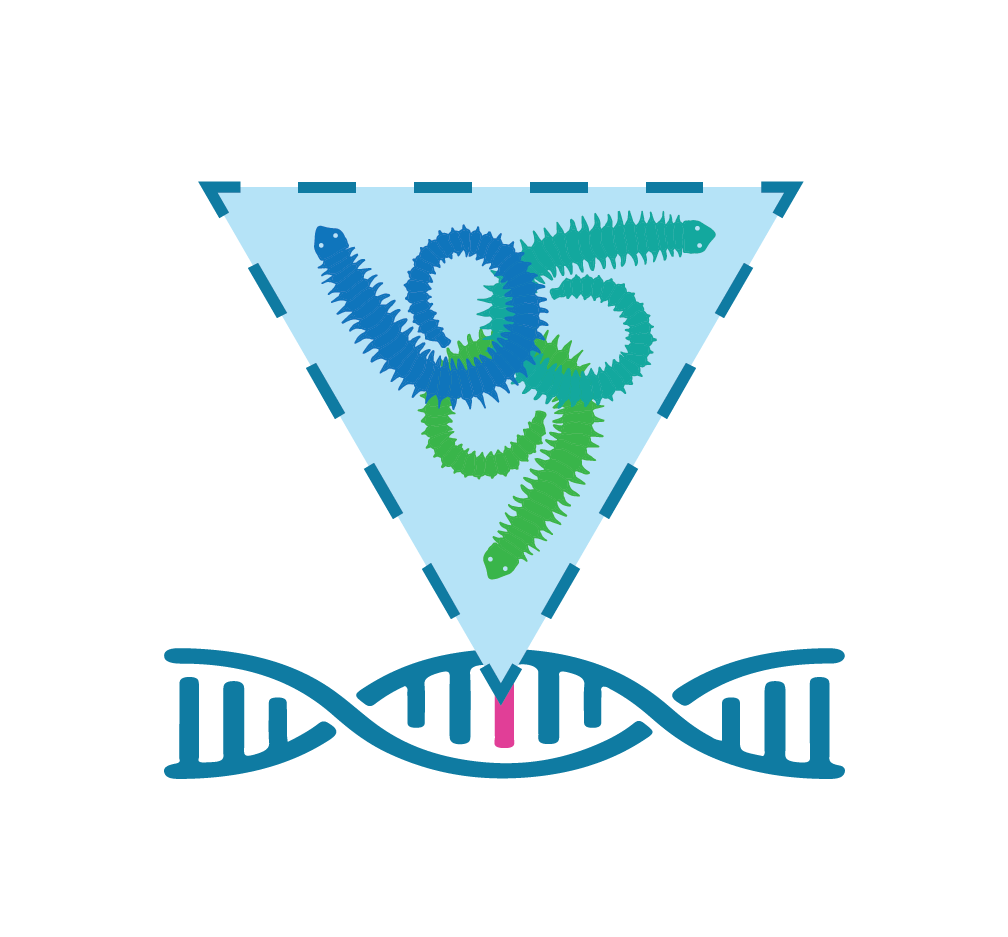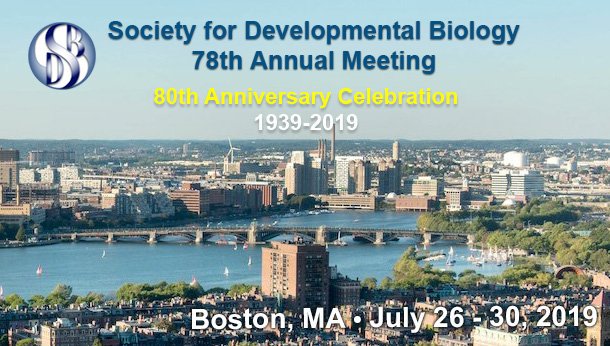Art the Science is a website that features and supports SciArt. Duygu has been featured as a creator (of SciArt) this month. See her interview and artwork here.
Emma is giving a talk at NeMOC series
Emma is giving a talk as a part of the new exciting NeMOC series.
Electroporation as a post-embryonic delivery tool for uncovering mechanisms of regeneration in Platynereis dumerilii
From David Stern: Join the New Model Organism Occasional Seminar Series (NeMOC-OSS). Informal virtual talks on successes and struggles in building tools. Register here.
Cone snail tricks Platynereis - ocean drama!
We have a new publication in Science Advances, an amazing collaborative body of work lead by the teams of Eric Schmidt and Toto Olivera at University of Utah. We are thrilled to be a part of this cute (and dramatic!) story of aggressive mimicry in cone snails, and how they use pheromones to trick worms like Platynereis to eat them. All the worm experiments to test reproduction behavior by administering cone snail small molecules were carried out at our lab.
Link to the research article: Small-molecule mimicry hunting strategy in the imperial cone snail, Conus imperialis
And some fun popular science media coverage of this story:
Duygu Haftanın Bilim Kadınları'nın konuğu
Bilim Kadınları platformu Twitter’da bu hafta Duygu’ya yer veriyor. Eğer bu hesabı takip etmiyorsanız mutlaka takip etmenizi öneriyoruz.
We are hiring! (Post doc)
ÖZPOLAT LAB at the Marine Biological Laboratory, Woods Hole, MA, USA is looking for a postdoc
We are looking for a post-doctoral researcher to work on our NIH-funded germline regeneration project in the marine annelid Platynereis dumerilii.
The project involves live-imaging germline formation and regeneration in the embryonic, larval and juvenile stages of the worms using advanced microscopy. MBL has excellent imaging resources including several light sheet systems, confocal and spinning disk microscope as a part of the new exciting imaging initiative. The post-doc will have the opportunity to interact and learn from our internal and external collaborators, and take advantage of MBL’s vibrant community during the summers.
The project also includes microinjections to establish transgenic lines for visualizing germ cells and combining the imaging results with single cell transcriptomics.
Some prior imaging experience (familiarity with one or more of the systems above) is preferable but not necessary. The successful candidate will get the necessary training in imaging. Familiarity with molecular cloning, RNA/DNA techniques is required. Experience with tissue transcriptomics or single cell RNAseq would be a plus.
We are a lab that supports diversity and inclusion! Candidates from minoritized backgrounds are strongly encouraged to apply.
Please get in touch with the PI, B. Duygu Özpolat (dozpolat [at] mbl.edu), for informal inquiries.
Apply here
Welcome Anna Byczynski
We are happy to welcome a new lab member, Anna, who is joining as a Research Assistant. Anna will be working on establishing transgenic Platynereis lines to study germ cell development. Anna received her B.S. in Marine Biology from University of Rhode Island in 2020.
Art Lab hosts Duygu
On this week's podcast episode of #DivingDeeper, we're talking about science, nature, art...and worms with MBL scientist B. Duygu Özpolat . Headphone Listen now on Spotify & Apple Podcasts: http://linktr.ee/ShowMustGoShow
https://art-lab-presents-diving-deeper.simplecast.com/episodes/conversation-with-duygu-ozpolat
(Türkçe) Eşey Hücrelerinin Rejenerasyonu Yaşamın Temel İlkelerine Bakışımızı Nasıl Etkiliyor?
Labmızda yaptığımız çalışmalara dair genel bir fikir edinmek isterseniz EkoEvo Derneği ile yaptığımız bu sunum ve söyleşiyi izleyebilirsiniz. EkoEvo’ya ve Dilşad’a çok teşekkür ederiz.
Özet:
Çok hücreli canlılar, eşeyli üreyebilmek için embriyonun gelişimi sırasında üreme hücrelerini yapacak hücre hattını oluştururlar. Biyolojide genel olarak kabul edilen görüş, bu üreme hücresi öncüllerinin, vücudun kalanını inşa edecek somatik hücrelerden ayrı ve özel hücreler olduğudur. Öyle ki, eğer üreme hücre hattı zarar görür veya deneysel olarak (veya ameliyatla) vücuttan alınırsa, somatic hücreler üreme hücrelerinin yerine geçemez ve canlı kısırlaşır. Fakat, bu genel olarak kabul edilen görüşe ters düşecek şekilde pek çok canlı, üreme hücrelerini rejenere edebilme yeteneğine sahiptir. Bu seminerde soma-üreme gücresi (germ) ayrımının geçerliliğini inceleyeceğiz. Üreme hücrelerini rejenere edebilen canlıların, yaygın olarak kabul gören bu temel ilkeyi sorgulamamıza neden sebep olduğunu, ve üreme hücresi rejenerasyonunun sağlık, hücre programlaması, popülasyon genetiği ve evrime kadar varan etkilerinin neler olabileceğini tartışacağız.
Spiraliabase Community and Virtual Lab Meetings
If you work on Spiralians join us at Spiraliabase, a community of scientists sharing ideas and meeting virtually for lab meetings.
Duygu has been one of the organizers of the monthly Virtual Lab Meetings, and you can find the recordings of these meetings and sign up for the future meetings on the Spiraliabase website.
Also don’t forget to follow Spiraliabase on Twitter!
Welcome Bria Metzger
We welcome our new team member, Bria, who is a new Research Assistant at the Özpolat lab. She will work on germline regeneration in Platynereis. Bria graduated this past spring from Brown University with dual honors in biology and english nonfiction. Though she didn’t see the ocean until age 13, she's wanted to study marine organisms ever since she saw the episode “She sells seashells by the sea shore” from What’s New Scooby Doo. Bria first came to the MBL as a student researcher in Dr. Irina Arkhipova's lab, and she's thrilled to once again be part of the scientific community here!
Emily off to Sweden
We are sad to see her go, but so excited for her new adventures in graduate school in Europe! Goodbye Emily. You will be sorely missed.
Özpolat Lab gets NIH MIRA funding
We are thrilled to share the news that our lab is now funded by NIH NIGMS with a MIRA grant to study germline regeneration in Platynereis dumerilii using live imaging, transgenics, and single cell sequencing.
Tune back in for new job opportunities at the Özpolat lab!
Upcoming - Arizona State University
Kate and Duygu will be visiting ASU for the Center for Biology and Society conversation series. Date: 22 January 2020. Join us for a conversation on Germline Regeneration.
ASCB/EMBO 2019 - Round table discussion on functional tools
We will be at the ASCB/EMBO meeting in Washington D.C. in December to hold a roundtable discussion on "Developing approaches for testing gene function in post-embryonic stages". Please join us and spread the word! Follow us on Twitter for updates.
Is the Germline Immortal and Continuous? - Preprint
Kate MacCord and Duygu submitted a review discussing germline immortality and continuity in light of recent research on induced pluripotent stem cells and germline regeneration in several different research organisms.
We have posted a preprint of this manuscript on Zenodo, which you can download from here. If you have any feedback, we would love to hear from you! Post a comment here, or send us an email.
A) Which component of the germline is immortal and continuous? Stars: points of change. Cells originating from germline (G) in blue, from soma (S) in yellow. B) Distribution of germline regeneration across animal phyla. Gray indicates the phylogenetic location of traditional model organisms which cannot regenerate the germline in vivo (indicated by "X"). Check marks indicate clades in which there is evidence for germline regeneration.
Özpolat Lab Receives a UChicago Microbiome Center Seed Grant
Happy to announce that the Özpolat lab has been awarded a seed grant by The Microbiome Center to look into the role of microbiome in segmented worm regeneration. We will collaborate with Jessica Mark Welch (MBL) and A. Murat Eren (UChicago) on this project.
Upcoming - Kate's PhilInBioMed Talk in Bordeaux
Kate will be giving a talk on Germline Regeneration in Metazoans at the Second meeting of the PhilInBioMed international network in October in Bordeaux, France.
Upcoming - Duygu's Keynote Seminar at Stowers Institute
Duygu will be the keynote speaker at the Young Investigators Science Retreat at Stowers Institute in September.
Özpolat Lab Receives an NSF-EDGE Grant
We have some great news! Alexa Bely (University of Maryland), Elaine Seaver (Whitney Labs) and B. Duygu Özpolat (MBL) have been awarded an NSF EDGE grant to develop functional approaches for studying regeneration in annelids. We have a webpage and a Twitter account.
We will be running workshops so follow us on Twitter and through our website to get updates. We also plan on sharing progress without waiting for publications, so we hope this project will benefit more than just our 3 labs.
Finally, we have two research technician jobs available (one at UMD, Maryland with Alexa Bely; the other at Whitney Labs, Florida with Elaine Seaver. We are an awesome team, come join!
For more info on these positions, check out the website.
WEDGE: Worms on the Edge
Upcoming - SDB Meeting 2019 in Boston
Emily and Emma will be presenting posters at the Society for Developmental Biology Meeting in Boston. Come check the posters out and chat with them!














